A fragment of a pillow-shaped ceramic tablet with neatly impressed columns of cuneiform text, accounting of Ur III food distribution,
representing wages. 82 grams, 67 mmFine condition.
Ex UK art market, 1970s.
Property of a London gentleman.
Cf. Liverani, M., Antico Oriente, Storia, societa' ed economia, Roma, 1988, pp.608-609, fig.111, for type.
A ceramic chalice with broad everted rim, painted with groups of dashed lines, chevrons and plain bands of varying width. 260 grams, 11.5 cm wide
Acquired 1980-2015.
Ex Abelita family collection.
A penannular, round-section bronze bracelet featuring dragon head terminals with detailing to the facial features. 53 grams, 68 mm wide
Early 1990s London collection.
Acquired on the UK art market.
From a private collection, Lancashire, UK.
A gold pendant composed of a conical cap with band of raised arches and suspension loop, set with a carnelian stone. 2.51 grams, 21 mm
Acquired 1980-2015.
Ex Abelita family collection.
A group of two copper-alloy vessels or vessel components: a shallow bowl with wedge-shaped handle; a hemispherical bowl or lid with truncated conical terminal or foot. 551 grams total, 11.5 - 17.5 cm
UK collection since the 1990s.
Property of a Sussex, UK, teacher.
A gold pendant with tablet-shaped stone body wrapped in a sheet-gold sleeve, granulated bead and suspension loop above, bulbous dangle below. 2.26 grams, 31 mm high
Acquired 1980-2015.
Ex Abelita family collection.
A bulbous ceramic jar with flared neck flanked by two integral handles, two strips of raised knops to the body; hole near base of one handle. 359 grams, 12 cm high
Acquired 1970s.
From an important deceased family collection by descent.
A string of lapis lazuli beads of various types, including biconical, wheel and tubular types. 3.66 grams, 39 cm long
Acquired 1980-2015.
Ex Abelita family collection.
A copper-alloy bowl with omphalos and fluting. 264 grams, 19 cm wideFine condition.
Acquired 1980-2015.
Ex Abelita family collection.
A plano-convex rock crystal stamp seal with oblong base, displaying a capricorn advancing left, with Pahlavi script in the field; drilled through the body for suspension; the body of the seal also engraved with circular and lozenge motifs; accompanied by a museum-quality impression. 8.46 grams, 22 mmFine condition.
Acquired 1980-2000s.
Important collection of a London gentleman.
A clay plaque fragment displaying a stylised incised tree of life and a figure seated right, depicted with pinched head, recessed eye and outstretched arms. 123 grams, 10 cm
Acquired early 1990s.
Ex private American collection; thence by descent.
Private collection since 1998.
A shell cylinder seal with scenes in two registers; accompanied by an old scholarly note, typed and signed by W.G. Lambert, late Professor of Assyriology, University of Birmingham, 1970-1993, which states: 'Cylinder seal of fossil shell, 45 x 17 mm. Two registers: above two seated figures drinking beer from a pot through straw, palm tree terminal. Below: contest scene of hero, two domestic quadrupeds and two lions. trans-Tigridian, c.2500-2300 B.C. Condition fair.' 23.4 grams, 45 mm
From an important family collection.
Examined by Professor Wilfrid George Lambert FBA (1926-2011), historian, archaeologist, and specialist in Assyriology and Near Eastern archaeology, in the late 1980s and early 1990s.
Accompanied by a typed and signed note by Professor of Assyriology, University of Birmingham, 1970-1993.
'Trans-Tigridian' in this context means 'from across the River Tigris', i.e. from the region between the Tigris and the Zagros mountains, between the Iranian highlands and Mesopotamia.


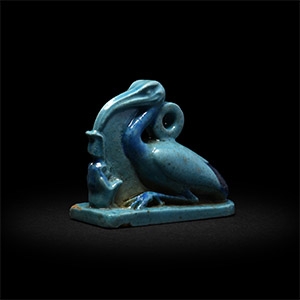



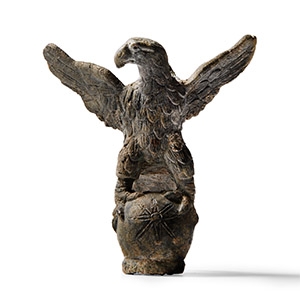
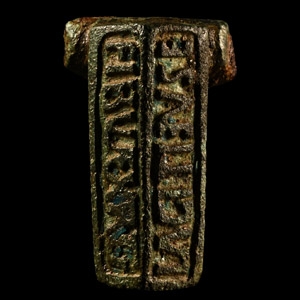

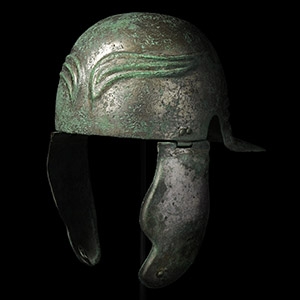
.jpg)
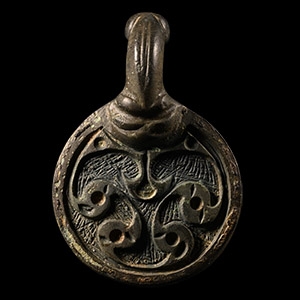
.jpg)
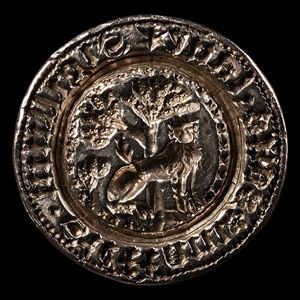
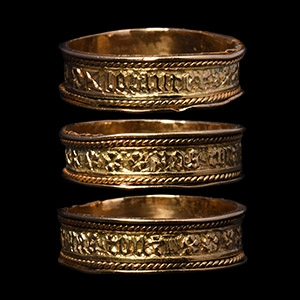


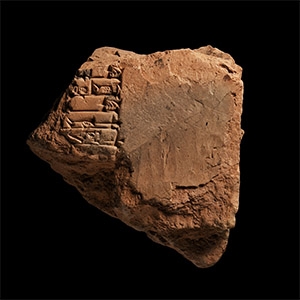
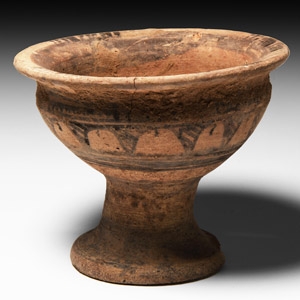
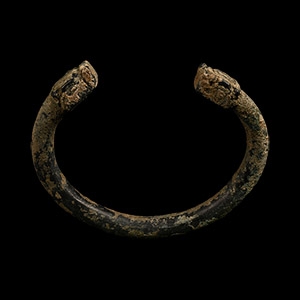
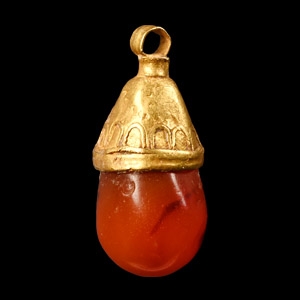

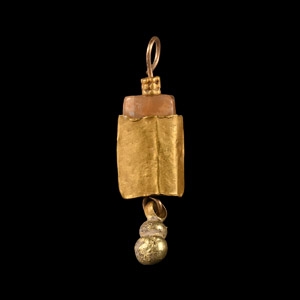
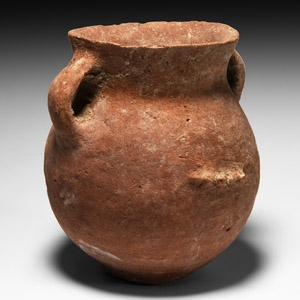
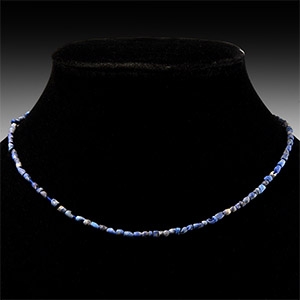

.jpg)





